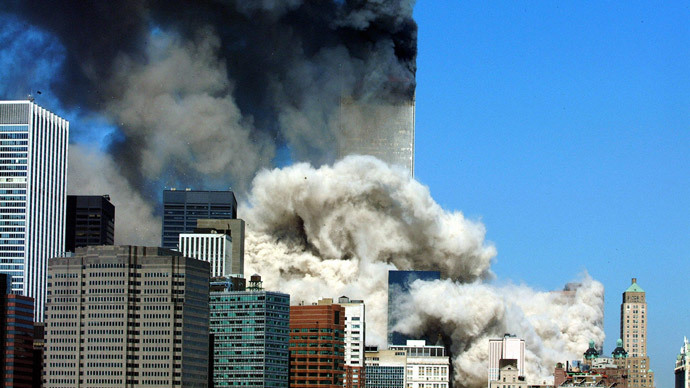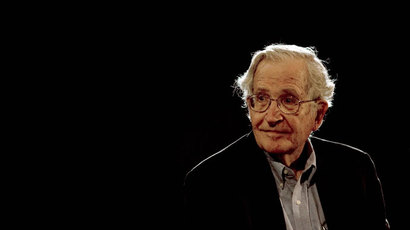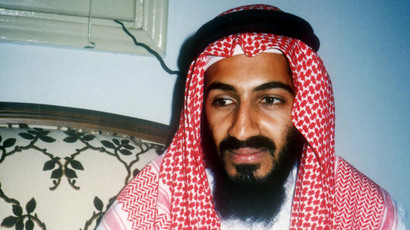9/11 hijackers tested airport security before attacks, authorities ignored warnings

Months before they participated in the September 11, 2001 terrorist attacks, Al-Qaeda operatives were spotted and approached at a Boston airport, according to a new report, but concerns raised at the time were ignored by authorities.
The New York Post reported on Sunday this week that newly unveiled court papers show for the first time that at least three eyewitnesses reported observing suspicious activity at Logan International Airport in Boston, Massachusetts in 2001 that was later linked to the Al-Qaeda hijackers.
Paul Sperry wrote for the Post that the three witness accounts were never publically unveiled and were absent from the official 9/11 Commission report published in 2004. Nevertheless, those eyewitnesses told investigators that they saw and confronted Al-Qaeda hijacker Mohamed Atta, the man who is believed to have flown American Airlines Flight 11 into the World Trade Center’s north town more than 13 years ago.

Among the eyewitnesses who say they saw Atta in early 2001 at Logan are American Airlines technician Stephen Wallace, AA passenger screener Theresa Spagnuolo and her supervisor, James Miller Jr. Their recollections were not made public, Sperry wrote, but instead were filed with court documents pertaining to the wrongful death lawsuit brought by the family of Mark Bavis, a hockey scout who perished on 9/11.
“Because the case was settled in 2011 for several million dollars and never went to trial, the evidence never aired in open court,” Sperry wrote. “The testimony is expected to factor prominently in another 9/11 lawsuit brought against the airlines by the owner of World Trade Center Properties. That case, which is on appeal, is expected to be heard next year.”
In Sunday’s report, Sperry goes on to cite Brian Sullivan, a former special agent with the Federal Aviation Administration who, according to the Post, “at the time warned of hole in security at the airport.”
Indeed, a cursory Google search for Sullivan reveals that he has spoken up about security lapses in the past, including in an apparent 2013 email to John Pistole, the administrator of the Transportation Security Administration. In the publicly available correspondence, Sullivan identifies himself as a former FAA special agent and says that years of litigation, including wrongful death and property damage suits, “have resulted in a tremendous amount of new information about aviation insecurity in the lead up to the 9/11 attacks.”
“That information, uncovered as a result of legal discovery, includes over 130 exhibits from the Mark Bavis case, and is available as part of the open court record. It is quite possible, even likely, that this discovery information might very well have altered the assumptions and conclusions reached by the 9/11 Commissioners had it been available at the time they formulated their report,” Sullivan wrote to Pistole. “The problem now is that the 9/11 Commission is no longer funded and, in fact, has been disbanded, so there is no mechanism to update their report. Although district court records ultimately will end up at the National Archive, there is no methodology to link the 9/11 discovery records with the 9/11 Commission records.”
Nevertheless, the details raised by Sullivan — and more recently by Sperry — show that Al-Qaeda operatives, as the former FAA agent wrote, “did in fact conduct surveillance and consider security” when plotting the terrorist attack that claimed nearly 3,000 lives.
According to Sullivan’s knowledge of the discovery in the Bavis case, Wallace, the AA technician, saw Atta at Logan on May 11, 2001 and observed him taking photographs wile, feet away, another raised suspicious by speaking loudly over the phone in Arabic.
“I said, specifically, ‘These two clowns are up to something,’” Wallace testified. “’They’ve been taking videos and pictures down at the main checkpoint.’”
Spagnuolo, the passenger screener, also encountered Atta and his associated around that same time.
“She was bothered by Atta’s filming, so she spoke to her supervisor about it” and he “informed her it was a public area and nothing could be done about it,” Sperry wrote the agents said in their investigation.
The supervisor, James Miller Jr., testified during the Bavis case that he recalled the event happening and that “it looked weird” to him. Despite notifying his superiors of his suspicions, however, no further action was undertaken.
“Instead,” Sperry wrote, “the worst terrorist hijacker in history was allowed to waltz through security without anyone stopping him, asking his name, checking his ticket, taking a picture, looking at his driver’s license or passport, opening his bags or patting him down.”
“What I would like to see going forward is for the TSA to review this discovery information to see where it differs from the 9/11 Commission report,” Sullivan wrote to the TSA chief last December. “Why is that important? It is important because of the warnings which were given about security deficiencies and the terror threat prior to the 9/11 attack. If the FAA, port authority or airlines had heeded those warnings and taken steps to enhance security, it may very well have served to discourage, deter or detect the attacks.”














